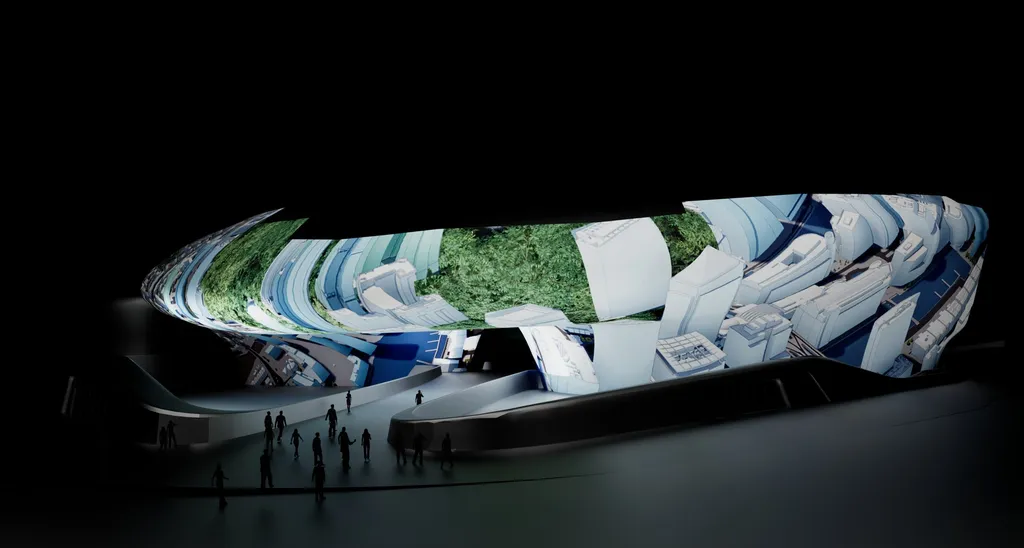The construction industry stands at the precipice of a monumental shift, driven by a confluence of global forces that are reshaping the very foundations of infrastructure development. As the world grapples with aging assets, technological disruption, and the urgent need for sustainable urbanization, the sector is poised for a renaissance that could redefine its role in the global economy.
**Infrastructure: The Backbone of a Changing World**
Infrastructure is no longer a passive backdrop to economic activity; it is the lifeblood of progress. From the hum of data centers powering artificial intelligence to the sprawling networks of electric vehicle charging stations, the demand for robust, resilient infrastructure is surging. The numbers are staggering: an estimated $106 trillion in investments will be required globally through 2040 to meet these needs. This figure underscores a simple truth: the future of construction is intricately linked to the future of the global economy.
**The U.S. as a Case Study in Reshoring and Renewal**
In the United States, the trend of reshoring strategic industries is creating a ripple effect across the construction sector. With nearly $1.25 trillion in investments announced to expand domestic manufacturing footprints, the country is witnessing a seismic shift. This surge is not merely about bringing production back home; it is about building the infrastructure to support it. From semiconductor manufacturing to pharmaceutical production, the demand for construction materials, equipment, and services is skyrocketing. As one industry executive put it, “We’re not just building factories; we’re building the future.”
**Aging Infrastructure: A Global Challenge**
Yet, the story is not all about new construction. Aging infrastructure assets pose a significant challenge, particularly in developed economies. In the U.S., the American Society of Civil Engineers has graded the nation’s infrastructure as a mere C, with half of the assessed categories receiving a D or D+. This translates to systems that are “mostly below standard, with many elements approaching the end of their service life.” The implications are clear: without substantial investment, these aging assets could become a drag on economic growth.
**The European Dilemma**
Europe faces a similar predicament. With over 40% of its transmission infrastructure at least two decades old, the continent is grappling with the dual challenge of modernizing existing assets and building new ones to support the transition to renewable energy. The European Union’s $2 trillion infrastructure investment gap highlights the scale of the task ahead. As one European policymaker noted, “We are at a crossroads. Do we continue to patch up the old, or do we invest in the new?”
**The Role of Disruptive Technologies**
The rapid adoption of disruptive technologies is further complicating the landscape. AI, electric vehicles, and renewable energy are not just changing how we live; they are transforming the very infrastructure that supports our daily lives. Data centers, for instance, are becoming the backbone of the digital economy, requiring massive investments in both construction and power grid infrastructure. The question for the construction industry is clear: can it keep pace with this relentless march of innovation?
**The Human Factor**
Amidst all this, it is essential to remember that infrastructure is not just about steel, concrete, and technology. It is about people. The construction industry has a unique opportunity to shape the cities of the future—cities that are not only sustainable but also inclusive, resilient, and livable. As urban populations continue to grow, the demand for affordable housing, green spaces, and essential services will only intensify. The challenge for the sector is to balance economic imperatives with the urgent need to mitigate climate change and foster social equity.
**A Call to Action**
The construction industry stands at a crossroads. The opportunities are vast, but so are the challenges. The sector must embrace innovation, prioritize sustainability, and invest in the workforce of the future. It must also engage in meaningful dialogue with policymakers, communities, and other stakeholders to ensure that infrastructure development serves the broader public good.
In the words of one industry leader, “We are not just building structures; we are building the foundation for a better world.” The time to act is now. The future of construction is not just about growth; it is about transformation. And the world is watching.

